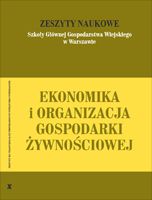Main Article Content
Article Details
BARNES C., OLIVIER M., 1995: Disability rights: rhetoric and reality In the UK. Disability and Society 10, s. 111-116.
BOMBOL M., 2008: Czas wolny jako kategoria diagnostyczna procesów rozwoju społeczno-gospodarczego, Monografie i Opracowania 555, Szkoła Główna Handlowa w Warszawie, Warszawa.
BORZYKOWSKA H., 1993: Czas wolny osób niepełnosprawnych, [w:] Edukacja osób niepełnosprawnych, red. A. Hulek, Wydawnictwo UN.O, Warszawa, s. 163-165.
DENEK K., 2002: Poza ławką szkolną, Eruditius, Poznań.
GUS, 2002: http://www.stat.gov.pl/gus (data dostępu: 4.12.2014).
LAW M., PETRENCHIK T., ZIVIANI J., KING J., 2006: Participation of children in school and community, [w:] Children: understanding children's occupations and enabling participation, red. S. Rodgers, J. Ziviani, London: Blackwell Science, s. 67-90.
MARTIN J., WHITE A., MELTZER H., 1989: OPCS Surveys of Disability in Great Britain, Raport 4, Disabled Adults: Services, Transport and Employment, London, HMSO.
OSTROWSKA A., 2006: Problem integracji, wyrównywania szans i aktywizacji osób niepełnosprawnych w Polsce, Biuro Informacji i Dokumentacji Kancelarii Senatu RP, Warszawa.
OSTROWSKA A., PIĄTKOWSKI WŁ., 1994: Niepełnosprawni na wsi, Wydawnictwo IFiS PAN, Warszawa.
SANTIAGO M.C., COYLE C.P., 2004: Leisure-time physical activity and secondary conditions in women with physical disabilities, Disability and Rehabilitation, vol. 26, nr 8, s. 485-494.
TERRY T., 1995: Universal adventure programming: Opening our programs to people with physical disabilities, Journal of Leisurability, vol. 22, nr 2, s. 16-20.
TRZEBIŃSKA E., DZIEWULSKA M., 2007: Uwarunkowania aktywności zawodowej osób chorych psychicznie, [w:] Osoby z ograniczoną sprawnością na rynku pracy, (red.) A.I. Brzezińska, Z. Woźniak, K. Maj, t. 1, Seria Osoby Niepełnosprawne, Academica Wydawnictwo SWPS/EFS, Warszawa.
WASILEWSKA E., 2010: Zróżnicowanie aktywności ekonomicznej osób niepełnosprawnych w Polsce i jej determinanty, Zeszyty Naukowe Szkoły Głównej Gospodarstwa Wiejskiego w Warszawie, nr 86, s. 81-96.
ŻBIKOWSKI J., DĄBROWSKI D., KUŹMICKI M., 2012: Determinanty aktywności zawodowej osób niepełnosprawnych zamieszkałych na obszarach wiejskich, t. I, s. 224, http://dazon.pswbp.eu/materialy/TOM_1_MP.pdf (data dostępu: 18.03.2014).
Downloads
- Marek Kuźmicki, Dominik Dąbrowski, Sytuacja ekonomiczna jako czynnik determinujący aktywność turystyczną osób niepełnosprawnych , Zeszyty Naukowe SGGW - Ekonomika i Organizacja Gospodarki Żywnościowej: Nr 93 (2011)
- Marek Kuźmicki, Aspiracje zawodowe przedsiębiorców a instytucjonalno- -systemowe uwarunkowania rozwoju przedsiębiorstw turystycznych , Zeszyty Naukowe SGGW - Ekonomika i Organizacja Gospodarki Żywnościowej: Nr 95 (2012)





